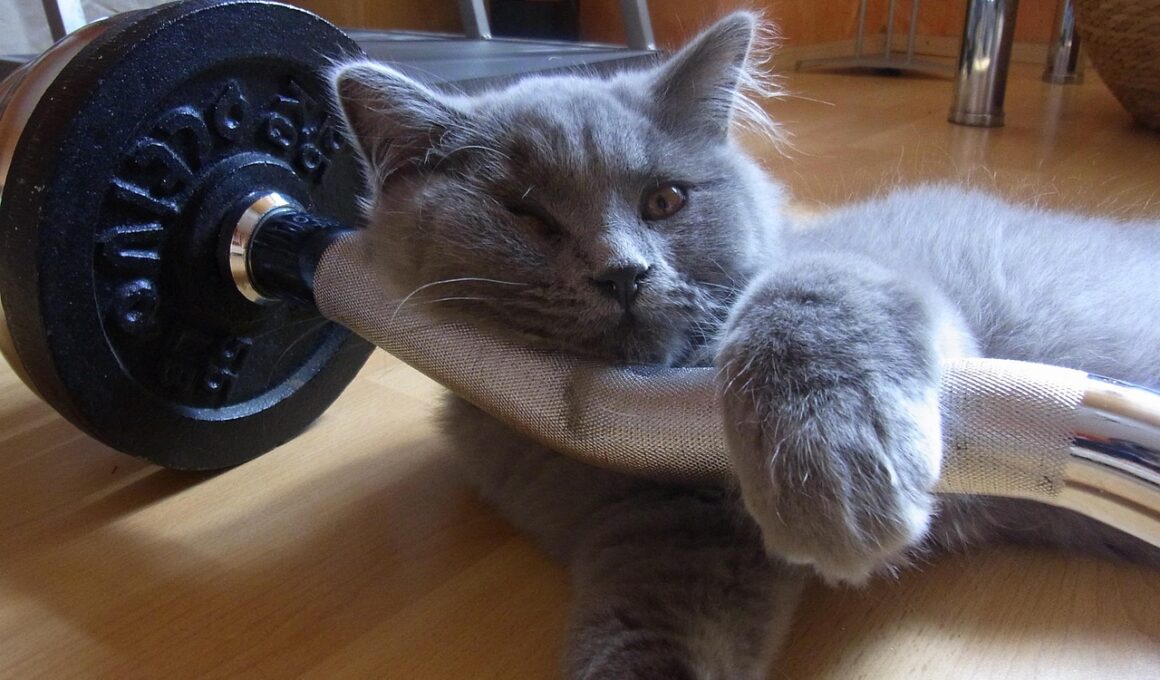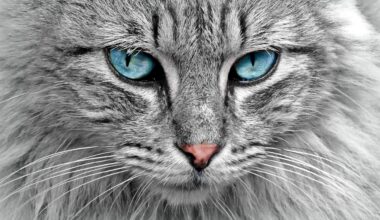How to Handle Cats Who Are Resistant to Automatic Feeders
Automatic feeders can significantly ease the daily routine of cat owners. However, some cats are resistant to using these devices, causing frustration for both the owner and the pet. Understanding why your cat refuses to use the automatic feeder is the first step to overcoming this issue. Cats are naturally territorial and can display hesitance towards new objects. Additionally, a sudden change in feeding routine can make them anxious. It’s essential to introduce objects that might be unfamiliar to them slowly, as this can keep their stress levels manageable. Using positive reinforcement is pivotal as well. You may begin by placing treats near or inside the feeder, encouraging your cat to explore it at their own pace. If your feline friend shows signs of interest, praise them to reinforce this behavior. Patience is key when helping a cat adjust to an automatic feeder. Monitor their progress closely, ensuring they feel a sense of comfort and safety. Gradually, most resistant cats will start adapting to the new feeding method, leading to a smoother experience for both them and you.
Once you’ve established a baseline of understanding your cat’s resistance, consider personalizing the feeder experience. Some cats are more sensitive to noise, and automatic feeders can sometimes sound mechanical or alarming to them. If this is the case, it’s advisable to choose a model that operates quietly, or even to explore feeding systems that allow for gradual noise progression. Alongside noise sensitivity, the design of the feeder should accommodate your cat’s preference. Some prefer a more traditional bowl setup, while others may be adventurous and enjoy exploring a new contemporary style. It’s critical to allow your cat to find their comfort zone without forcing or rushing them. Introducing the automatic feeder as a non-threatening new member of your cat’s environment can influence acceptance. This means placing the feeder in their favorite spot or near their usual eating area. Additionally, familiarity can enhance overall acceptance. Having proper treats that pique their interest when approaching the feeder makes it more enticing. Sometimes, even utilizing puzzle feeders can intrigue your cat to engage more. Establishing safety and comfort are paramount in aiding transition towards automatic feeding.
Gradual Transition to Automatic Feeders
An effective approach involves a gradual transition from traditional feeding methods to an automatic feeder. Begin by placing your cat’s usual food next to the automatic feeder, allowing them to investigate freely without pressure. Patience is essential; this familiarization process can take several days. The objective is to help your cat associate positive experiences with the new device. Once they show interest in eating beside it, gradually incorporate the food into the feeder itself. You can also utilize a timer setting for the feeder to mimic the normal feeding schedule, as this will create a sense of routine. Adjusting their feeding times to align closely with the automatic feeder’s timer is vital in easing their transition. As they become accustomed to the feeder releasing food at set intervals, they may begin to feel less anxious. Be sure to monitor your cat’s eating habits closely during this change, addressing any signs of distress immediately. Each cat requires unique care, so modify your approach based on their individual behavioral responses. Eventually, a seamless transition may occur, leading to a more manageable feeding situation for both you and your cat.
Another noteworthy issue that arises with some cats is the association of automatic feeders with less interaction from their owners. Since cats are creatures of habit, they may crave engagement during feeding times. Therefore, when introducing the automatic feeder, it is important to maintain regular interaction and engagement. You may sit near the feeder, talk to your cat during mealtime, and reinforce feeding times as quality bonding experiences. This connection can help diminish their anxiety. Involving a friend or family member might also help smooth the transition. You could focus on gradually reducing your presence as they adapt, making sure they still associate feeding with positive experiences. Identifying your cat’s preferences regarding interaction can ultimately improve their acceptance of the automatic feeder. By continuing to engage them with play and attention, they begin looking forward to the feedings as more than mere mealtime. It’s also beneficial to train their minds during this phase with puzzle feeders. Doing so may encourage further interaction as they have fun solving challenges while obtaining their meals.
Consult a Professional if Needed
Despite your best efforts, some cats may still resist automatic feeders. If your cat shows signs of frustration or continues to be resistant to change, it may be worthwhile to consult a veterinarian or feline behaviorist. These professionals can help you assess the behavior of your cat, provide tailored recommendations, and determine if an underlying issue exists. Cats can experience anxiety and stress related to environmental changes or the introduction of new devices. One potential suggestion could include using calming pheromones to ease their anxiety levels during the transition. You may explore options available on the market that cater to indigestion or feeding time irritation. Adapting the feeding process should be viewed as an ongoing journey rather than a fixed goal. Ensure to monitor your cat for signs of distress and adjust accordingly, laying emphasis on connection and comfort. Their well-being is paramount during this adjustment period, so seeking guidance is always beneficial. The holistic approach of addressing behavior can foster a more harmonious feeding situation for both you and your feline companion.
Once your cat starts embracing the automatic feeder, it’s vital to maintain consistent feeding schedules while observing any changes in eating habits. Consistency helps build trust, and the certainty of meals at certain times will reinforce the positive experience associated with the feeder. Practice preventive maintenance and ensure the feeder remains clean and functional. Regularly check the device to avoid any breakdowns or malfunctions that could lead to discouragement and even anxiety. Carrying out routine cleaning can also enhance the longevity of the feeder while maintaining a healthy feeding environment for your cat. Consider setting a reminder on your phone or calendar to regularly check on the feeder, ensuring it continues to operate as needed. As their feeding patterns stabilize, capture their spirit through adorable photos of feedings to cherish later. Not only does this document the journey, but it also adds a layer of heartwarming memories with your pet. Over time, your cat will view the automatic feeder as a positive element that enriches their daily life and allows you to provide them with the best care possible.
Conclusion
In conclusion, helping a cat transition to an automatic feeder involves patience, observation, and a proactive approach. It’s essential to recognize that each cat is unique and may require different strategies to adapt. Making sure that your feline companion feels comfortable and safe during this process is crucial. Utilize a variety of techniques ranging from gradual introductions to making feeding a fun experience. Your commitment to nurturing their acceptance will not go unnoticed. If resistance continues, don’t hesitate to seek professional advice to tailor solutions for your specific situation. This journey can improve not just the feeding routine, but also your relationship with your cat. Building trust through consistent interactions and observational care can cultivate a peaceful and joyful coexistence. Each small step you achieve will ultimately lead to a more efficient feeding approach, affording both you and your cat a relaxed daily life. The automatic feeder has the potential to simplify care needs significantly, enabling a better balance in your home. It’s time to embrace this change! Allow the journey to unfold thoughtfully, paving the way to a happier and healthier bond.
There’s a significant benefit to ensuring your cat uses an automatic feeder properly. A successful transition not only makes feeding times manageable for you as the owner, but it also creates a comforting routine for your cat. Such an arrangement promotes trust and emotional security, laying down benefits we both desire. Once your cat adapts, you may notice a decrease in reliance on constant meal watching. With a smooth automatic system in place, it’s likely to witness fewer instances of anxiety-related behaviors. This enhancement to their life opens the door for extra opportunities to engage in bonding sessions with your cat. Simplified feeding can grant both time for engaging activities, hence enriching the overall experience you have with your companion. The more secure and content your cat feels during feeding times, the more harmonious your household will be. In this way, automatic feeders can act as tools that not only streamline feeding but also strengthen connections. The combination of health, behavior improvements, and a happier atmosphere can foster the necessary changes for an enhanced living experience for both you and your feline companion.


